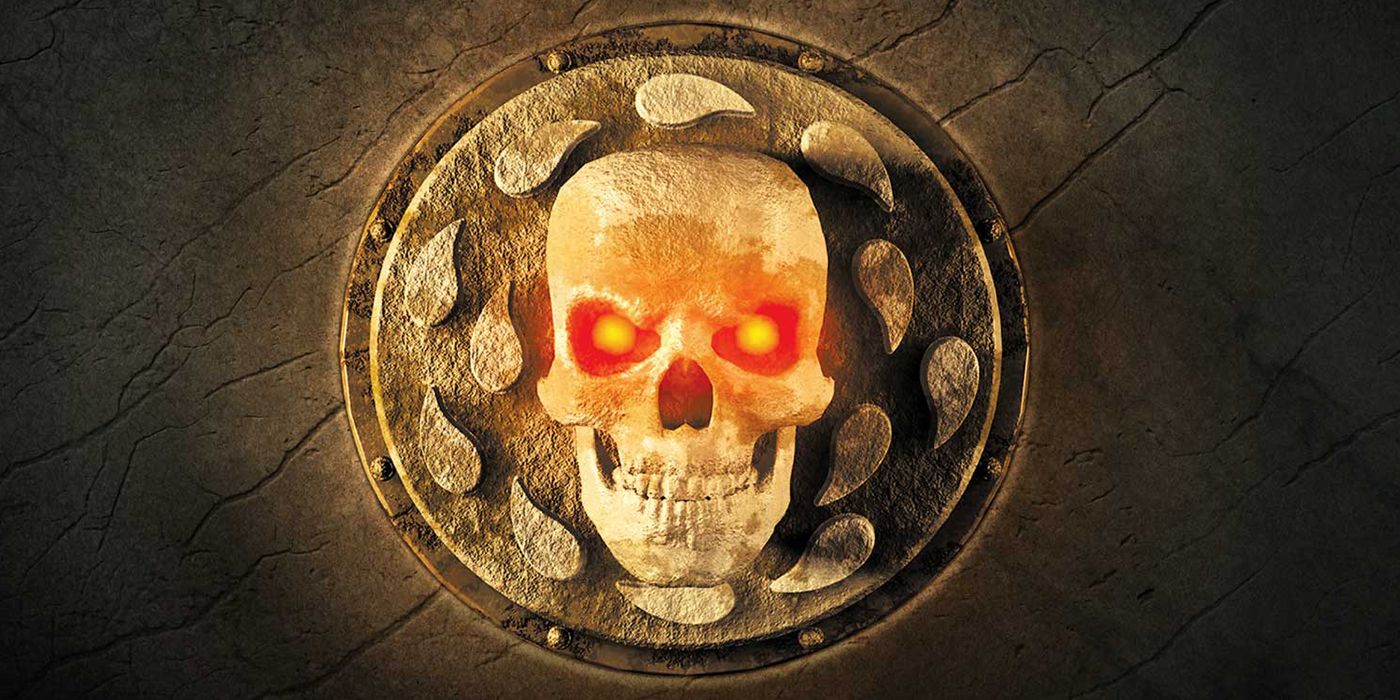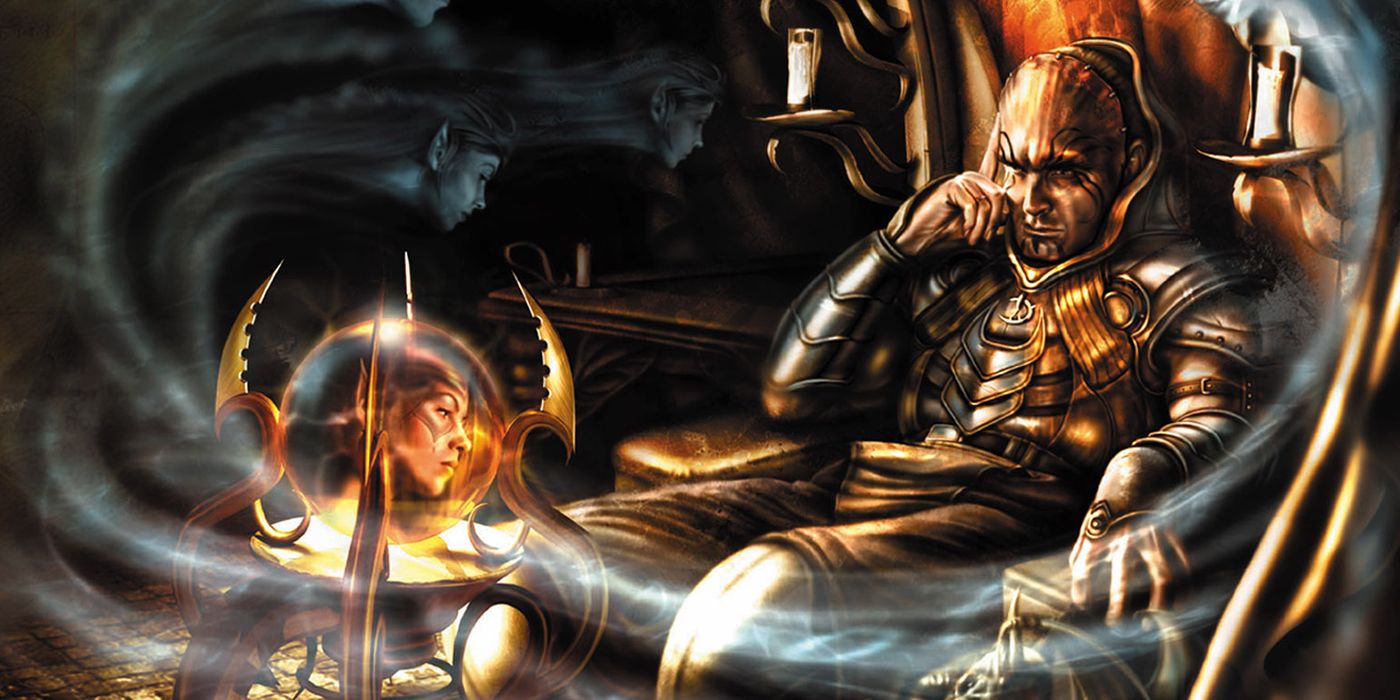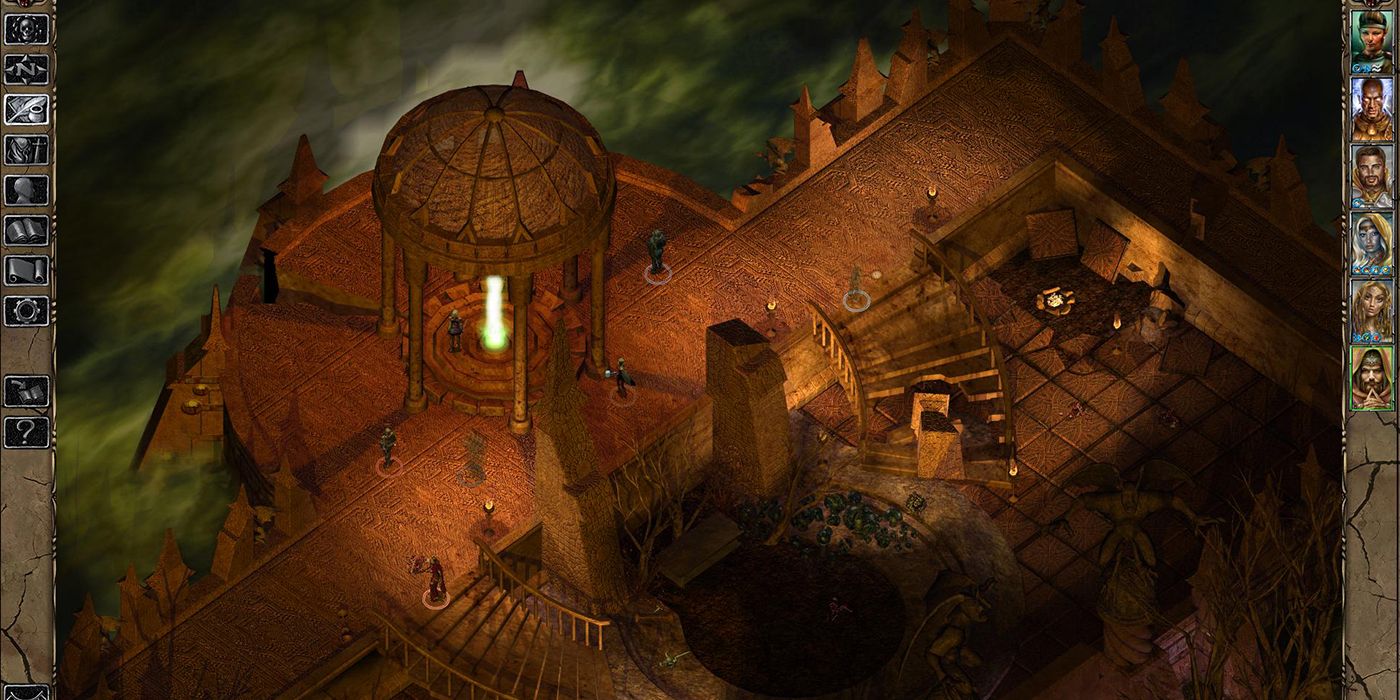With enhanced editions hitting consoles later this week for the first time ever and a Baldur's Gate 3 finally incoming, it's time to talk about one critically important staple of the western RPG genre. Over 20 years after its creation and despite countless competitors cropping up over the decades, the Baldur’s Gate trilogy is still among the greatest RPGs ever made.
The first Baldur's Gate released in 1998, with Baldur's Gate 2: Shadows of Amn following in 2000 and the final chapter Baldur's Gate 2: Throne of Bhaal concluding the trilogy's arc. Set in popular Dungeons & Dragons setting the Forgotten Realms, the Baldur's Gate trilogy functions like a one-on-one D&D campaign of epic proportions, with the game acting as Dungeon Master.
Baldur's Gate is the old passion project of BioWare, the studio behind Dragon Age and Mass Effect. Love those more recent games? Well, they were made possible by Baldur's Gate and the precedent it set as the first of its kind: a semi-open world RPG that put player choice at the heart of its narrative. When it debuted, nobody had seen anything quite like Baldur's Gate, even with games like Fallout and Diablo releasing around the same time. Even now in the time of near-lifelike graphics and gigantic interactive open worlds, Baldur's Gate (particularly Shadows of Amn) should be remembered and replayed as the best of the best—and here's why.
Baldur's Gate's stellar writing is perhaps the biggest reason that, for all its age, it still holds up beautifully today. Graphics become outdated, but good writing never does. And sure, the overarching story of the Bhaalspawn—the player character—is a narrative journey to treasure, surprisingly personal for having a plot with such a gargantuan scope, but it's not just that. It's everything: the companions and their enduring charm, the depth that even a side-quest offers, and the different ways that players can define their characters through interaction. Plus, these are the games that gave the world Minsc and Boo. That, in itself, is a triumph.
Characters in Baldur's Gate are a big part of how players form an emotional attachment to their playthrough. Besides the ever-lovable Minsc, there's a whole cast to meet; it's a formula that might sound familiar, but Baldur's Gate is BioWare's first foray into RPGs and the one that established its technique. Romances make their BioWare debut in Baldur's Gate 2 (another staple that stuck around throughout the company's two major franchises), and while in many ways BioWare has refined its romances in future games, Baldur's Gate is still on par with them in terms of length and detail.
When it comes to creating a wide range of quests available to players, few games do it better than Baldur's Gate 2: Shadows of Amn in particular. It's one of those few examples of the sequel being better than the original: BioWare took everything that worked about Baldur's Gate and poured it into Shadows of Amn while taking the narrative, and the player's narrative choices, to an even greater scale. And in Shadows of Amn, the variety in both quests and settings will keep any player on their toes. Saving a circus, retaking a castle from trolls, salvaging a talking sword that really wants to kill things from the sewers and drawing the ire of an ancient red dragon—and that's all only in the first couple chapters of the game.
Then, there's the sheer amount of things to do. Shadows of Amn has the biggest map of the trilogy, and players could easily while away nearly 100 hours completing all of the quests they can find. No, it's not the size of Skyrim by any means, but BioWare clearly made good use of the space it did have. Every explorable section of Amn is filled with with something interesting and worth the detour.
The Baldur's Gate trilogy is best enjoyed when players search for the little details, the things that make it truly an immersive experience. It's all in squeak of a miniature giant space hamster, the little bits of banter to share with the party, the clever jokes and references to beloved D&D lore. And of course, it must be said that Baldur's Gate left computer gamers and D&D players alike with one immortal lesson that rings true no matter the circumstances: You must gather your party before venturing forth.
In short, Baldur's Gate saved the western RPG. After the game's release, it paved the way for other D&D-based games including Planescape: Torment and Neverwinter Nights. In the long term, meanwhile, Baldur's Gate is the reason modern RPGs like The Witcher series (which had its first game built using the Neverwinter Nights engine) and Mass Effect were possible. Before Baldur's Gate, prospects for western RPGs were more or less nonexistant. After Baldur's Gate, a wave of PC RPGs followed, establishing the market for RPGs that still thrives today.
At a cursory glance, this trilogy might not look like it holds up today—but it absolutely does, because all of the things that made it truly special are timeless. The Baldur's Gate trilogy deserves to be celebrated then, now, and another twenty years from now.
Baldur's Gate 3 is in development for PC and Google Stadia.



